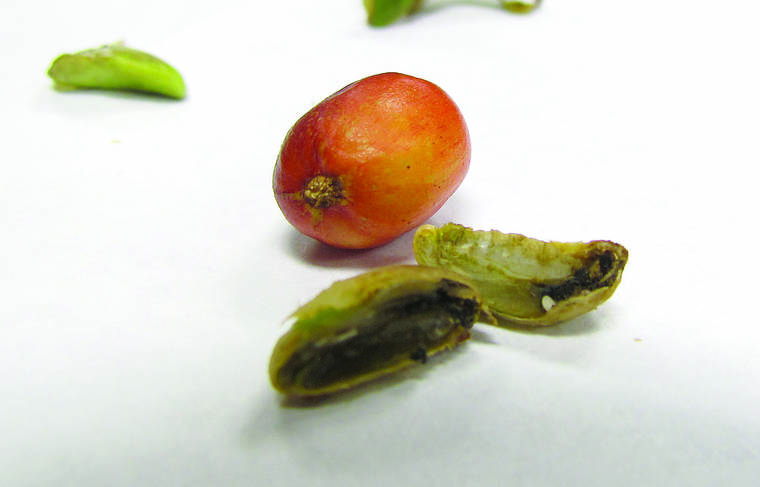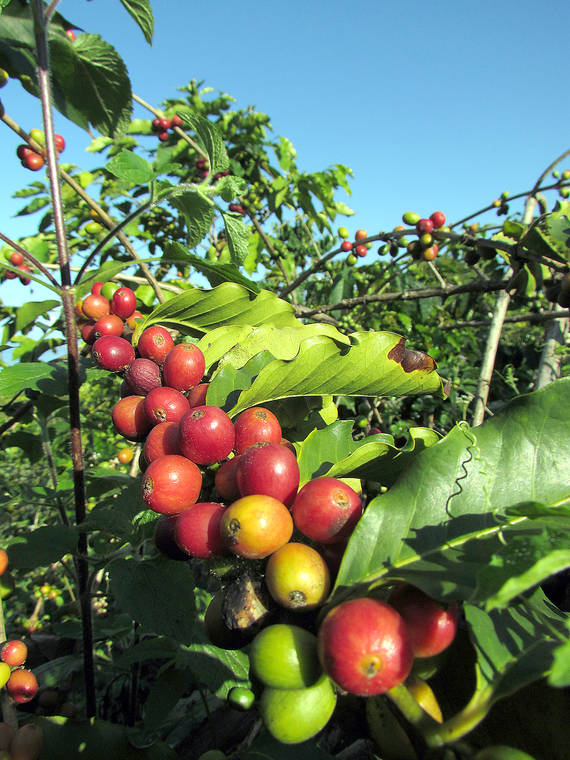The coffee berry borer has been confirmed in a residential area in Kalaheo on Kauai, state agricultural officials announced Thursday.
This is Kauai’s first detection of the coffee plant pest that has been established on Hawaii Island, Maui and Oahu for several years.
On Sept. 3, a Kalaheo resident submitted suspected infested coffee berries to the Kauai Invasive Species Committee, which sent the samples to the state Department of Agriculture and University of Hawaii, College of Tropical Agriculture and Human Resources. The samples were forwarded to the department’s Plant Pest Control Branch in Honolulu, where an entomologist confirmed CBB on Sept. 4.
The Department of Agriculture also collected additional samples from the resident’s property and Wednesday began surveying neighboring residential properties. Additional surveys at other sites are being planned to determine the extent of the infestation.
Kauai’s major coffee grower, Kauai Coffee, was informed of the detection of CBB on the island and has been surveying their fields. So far, the company has not detected any signs of CBB.
HDOA, UH-CTAHR and KISC are currently working on a collaborative response plan that includes integrated pest management practices that have helped to control the pest on other islands.
“While the extent of the infestation on Kauai is not known at this time, there is a strong coordinated effort between agencies and the coffee industry to try to contain and manage this pest,” said Phyllis Shimabukuro-Geiser, chairperson of the state Board of Agriculture. “We also ask the Kauai community to be vigilant and report any signs of CBB in their backyard coffee plants.”
CBB was first detected in the state in September 2010 in Kona and discovered in Ka‘u in May 2011. It was found on Oahu in December 2014 and on Maui in December 2016. It is still unknown how CBB first made its way to Hawaii Island and how it has spread to other islands.
This small beetle bores into the coffee “cherry” to lay its eggs. The larvae feed on the coffee bean, reducing the yield and quality of the bean. Since its detection in Hawaii, coffee growers have developed methods to manage the pest, which include using an organic pesticide and field sanitation. Some farms with good management practices have been able to keep infestation levels down significantly.
CBB, Hypothenemus hampei, is native to Central Africa and is also found in many coffee-growing regions of the world, including Central and South America.


